#Progressive Myths
Explore tagged Tumblr posts
Text
By: Michael Huemer / Free Black Thought
Published: Oct 14, 2024
Editors’ note: This is an excerpt from Michael Huemer’s new book, Progressive Myths.
The Myth
Many unarmed black people are shot by American police every year. Blacks are regularly killed by police due to racism.
Examples of the Myth
It is hard to find published sources that directly state the first part of the myth, concerning unarmed black men, though there are many sources that devote extensive attention to police shootings of unarmed black men while ignoring victims from other races.
In 2021, Skeptic magazine published survey results indicating people’s answers to the following questions:
Q1: “If you had to guess, how many unarmed Black men were killed by police in 2019?” (Available answers: About 10, about 100, about 1000, about 10,000, more than 10,000.)
Q2: “If you had to guess, in 2019 what percentage of people killed by police were Black?” (Respondents could choose any number from 0 to 100.)
In answer to Q1, 29% of people answered “about 1,000” or more (1,000: 19%; 10,000: 6%; over 10,000: 4%). In answer to Q2, the average estimate was 48%. (See further here.)
This doesn’t tell the whole story, though. The answers differed greatly by political orientation. Respondents who self-identified as “liberal” or “very liberal” were much less accurate than moderates or conservatives. Among liberal or very liberal respondents, nearly half (46%) thought that the number of unarmed black men killed by police was about 1,000 or more. This same group on average estimated that 58% of people killed by police were black.
Misconceptions were correlated with trust in the media—people who reported greater trust in the media were more misinformed about police shootings. This may be because media sources give misleading impressions about this particular issue. Alternately, it may be because “racist police shootings are a huge problem” and “the mainstream media are trustworthy” both have independent appeal to liberals.
Concerning the second part of the myth, that police killings show racial bias: The main argument for this is that a higher percentage of the people killed by the police are black than the percentage of the general population who are black:
Police disproportionately shoot and kill black Americans … black Americans were twice as likely to be shot and killed by police officers, compared with their representation in the population. —ABC News
Black people, who account for 13 percent of the U.S. population, accounted for 27 percent of those fatally shot and killed by police in 2021…. That means Black people are twice as likely as white people to be shot and killed by police officers. —NBC News
In 2013, three radical Black organizers—Alicia Garza, Patrisse Cullors, and Opal Tometi—created a Black-centered political-movement-building project called #BlackLivesMatter in response to the acquittal of Trayvon Martin’s murderer, George Zimmerman. […] We are working for a world where Black lives are no longer systematically targeted for demise. —Black Lives Matter website
Reality
There is evidence that American police are unnecessarily violent. However, that is not my topic here. My topic here is whether police violence shows a widespread racial bias.
1. How often are unarmed black people killed by police?
Start with the number of unarmed black people killed by police. Again, half of liberal respondents estimated this at 1,000 or more for 2019. The correct figure was 36. (The total number of blacks killed by police in that year was 286, of whom just 36 were unarmed, 32 men and 4 women.) In the same year, police killed 54 unarmed white people (46 men and 8 women).
Does this still represent a major problem? Bear in mind that this was in a country of 330 million, which included 47 million blacks. It would not be shocking if, of 47 million black people, a total of 36, despite being unarmed, did something sufficiently threatening to cause them to be killed by police. In any case, the risk of this happening to a given black person is extremely small; they are literally more likely to be struck by lightning.1
2. The racial disproportion
Let’s turn to the total numbers of blacks and other Americans (whether armed or unarmed) killed by police. The statistics in the quotes above are accurate, based on the best available data: Blacks comprise about an eighth of the population but a quarter of the police shooting victims. Hence, you are more likely to be shot if black than otherwise. Does this indicate racism?
Consider another, even more shocking disproportion: Males make up only 50% of the population but 95.5% of the police shooting victims. Men are thus twenty-one times more likely to be shot by police than women. One could claim that this indicates an extraordinary degree of sexism, many times worse than the racism shown by police departments.
But most of us would reject this inference. To determine whether the shooting statistics indicate sexism, we must first consider such things as: How often do police make contact with male suspects? How often do men commit violent crimes, compared to women? How often do men commit violence against police officers, compared to women? Those questions would be relevant because they are proxies for the tendency of men to engage in threatening behavior toward police of the sort that could plausibly lead to a violent police response even in the absence of sexism. As it turns out, about 88% of all murderers and nearly all cop-killers are men. In 2013-14, for example, there were 66 men who killed police officers and one woman who aided her husband in killing a pair of police officers.
This would undercut the narrative of anti-male bias among police. Police may well be killing too many men, but we cannot infer sexism, since the gender disparity can as well be explained by greater numbers of aggressive male suspects as compared to females.
An exactly parallel point applies to the racial disparity. To assess the amount of racial bias, we need to consider such things as number of police contacts, violent crime rates, and rates of violence against police officers.
Begin with numbers of police contacts. Usually, when police make contact with a suspect, this is because a member of the community has called the police to report some apparent criminal behavior. These community members usually give a description of a suspect whom they believe to be committing or about to commit a crime. As it turns out, the racial composition of the group of suspects reported to the police by members of the community matches the racial composition of people shot by the police, leaving no evidence of racial bias on the part of the police.
You could hypothesize that racism by members of the community causes them to disproportionately report black people to the police. But the simpler explanation is that the higher rates at which black individuals are reported to the police are due to the higher crime rates by black individuals.
Apropos of that, recall that, per the quotations above, blacks comprise about 13% of the U.S. population but 27% of police shooting victims. However, blacks also comprise about 40% of murderers in the U.S., and 43% of cop-killers. Therefore, just as in the case of the gender disparity, the racial disparity in police shootings could plausibly be explained by a disparity in threatening behavior. It’s still possible that racism plays a role, just as it’s still possible that sexism plays a role, but the statistics give us no reason to posit racism or sexism. If anything, the statistics suggest a pro-black bias by police, since the rate at which blacks are shot by police is disproportionately low compared to the rate at which black people kill police officers.
3. Experimental evidence
The above sort of evidence has limitations. The database of homicides committed by the police does not have information about all the aspects of suspects and their behavior that may have influenced a decision to use lethal force. In brief, one cannot tell how threateningly each suspect was behaving.
Experimental evidence may address this shortcoming, since a laboratory experiment can control essentially all plausibly relevant factors other than race. This was the task of Lois James et al.’s (2016) study, which observed police behavior in simulators of the sort used during police training. The simulations involve video enactments, using actors, of the sorts of scenarios that police often encounter that have a risk of leading to a shooting. Sometimes, the suspect in the video pulls a gun and shoots at the camera; other times, the suspect pulls out an innocuous object such as a wallet. As the scenario unfolds, officers must decide whether and when to draw their guns and shoot at the suspect in the video. For the experiment, officers were equipped with Glock 22’s (like those used in many police departments), modified to emit infrared light rather than shooting real bullets, to detect when and where officers had shot.
Researchers prepared two versions of each of several scenarios: a version using a white actor, and a version using a black actor with everything else held the same. The purpose was to test whether officers would be quicker to shoot at black suspects.
This sort of experiment admittedly has its own limitations. Since officers know that they are not in any genuine danger, they may not react in the same way that they would in real life (even though they were instructed to do so). Nevertheless, the simulations were highly realistic, subjects showed signs of immersion, and simulations of this kind are widely taken to be the best way of preparing for real-world encounters. If officers were quicker to shoot black suspects in the simulations, progressive commentators would surely be quick to cite this as powerful evidence of racism, and rightly so.
In fact, the reverse turned out to be the case. In the scenarios in which the suspect pulls a gun, officers took 1.1 seconds to shoot if the suspect was white, and 1.3 seconds if the suspect was black. In scenarios in which the suspect pulls out a harmless object, officers wrongly shot the suspect 14% of the time if the suspect was white, and only 1% of the time if the suspect was black. This dovetails with the other evidence cited above for a pro-black or anti-white bias in police shootings.
Objections
1. How could there possibly be an anti-white bias in police shootings? That’s ridiculous.
Reply: The most likely explanation is an effect of media coverage and public attention. In recent years, enormous attention has focused on shootings of black suspects, which causes problems for the police department and the individual officers involved. By contrast, the other three quarters of police shootings, which are of non-black suspects, receive almost no attention. Thus, police officers are much more reluctant to shoot black suspects than suspects of other races.
This is supported by the statements of actual police officers. In 2015, a white Birmingham police detective was attacked by a black suspect, pistol whipped with his own gun, and left unconscious and bleeding on the ground while the suspect drove away. The detective later explained that the suspect was able to do this in part because the detective had hesitated to use force. “A lot of officers are being too cautious because of what’s going on in the media,” he said. “I hesitated because I didn’t want to be in the media like I am right now.” Another cop in the same police department explained that police are “walking on eggshells because of how they’re scrutinized in the media.”
Perhaps this is as it should be—if you could be deterred from using deadly force against someone by fear of your actions’ being scrutinized, then you probably should not use deadly force against that person. Granted, this entails some risk to officers, as the above case illustrates. But perhaps the risk to officers is worth it to reduce the risk of unnecessarily killing civilians.
In that case, the problem is that the media don’t scrutinize shootings of white, Asian, Hispanic, or other non-black suspects. Fewer people would probably be killed if they did.
2. This doesn’t address all other forms of racial bias in policing or the justice system.
Reply: That’s right, it doesn’t. The above discussion is only about homicides by police. This is worth addressing because it is the most momentous action taken by police or the justice system, as well as the most discussed. This issue was the cause of the protests and riots in many American cities in the last few years.
The hypothesis cited in reply to Objection 1 is consistent with the possibility that other aspects of the justice system show more racial bias, since they are much less scrutinized by the media and the public. If police rough up a suspect on the street, or a judge hands out an overly harsh punishment, there will normally be no public scrutiny. This is also consistent with Roland Fryer’s well-known (2019) study, which found that police are more likely to use nonlethal force against minority members than against whites, but not more likely to use lethal force. An obvious explanation for the difference in nonlethal force is that police officers engage in racial profiling.
Michael Huemer is a professor of philosophy at the University of Colorado, Boulder. He is the author of more than eighty academic articles in epistemology, ethics, metaethics, metaphysics, and political philosophy, as well as about twelve amazing books that you should immediately buy. Check out his website and his Substack, Fake Noûs. Buy Progressive Myths on Amazon or Barnes & Noble.
--
1 - 400-500 Americans are struck by lightning per year, and 79% of the fatalities are among men. I don’t have lightning strike statistics by race, but assuming that lightning is race neutral, the average black person’s risk of being struck should be about 1.3×10-6, while their probability of being unarmed and shot by police is about 7.7×10-7. For black men, the probability of a lightning strike is probably about 2.2×10-6 (given that men are about four times more likely to be struck than women), while the probability of being shot by police while unarmed is about 1.5×10-6 (32 out of 22 million black men).
==

[ Source: The Washington Post ]
It should be noted that "unarmed" is not the same as "not dangerous." Someone who tries to run an officer down with a car or goes for the officer's gun is classified as "unarmed."
From Skeptic's study:
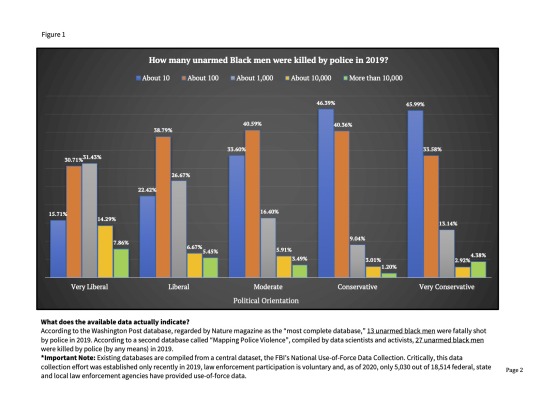
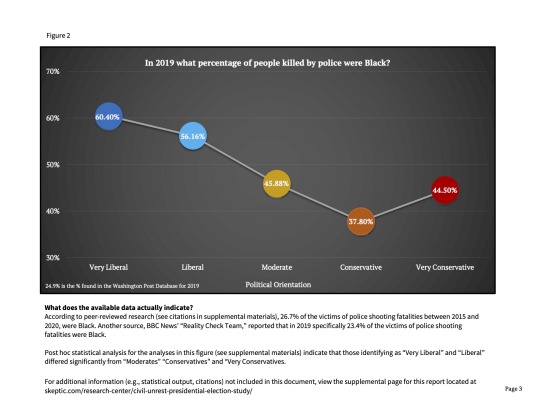
It's worth noting a second element of Skeptic's study which found that respondents with higher trust in news media were far more misinformed about police shootings compared to the reality.
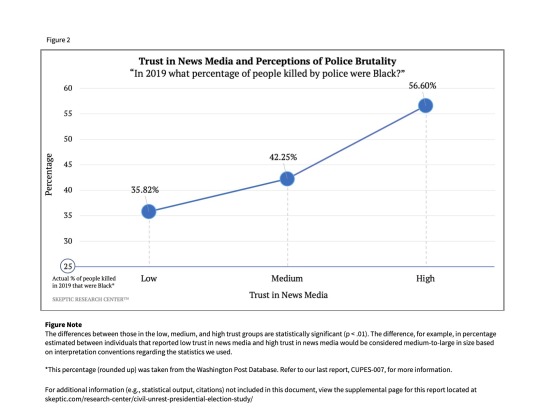
You don't hate legacy media enough. You think you do, but you don't.
If you're comfortable describing tenets of religious faith that violate demonstrable reality as mythology, you should be equally comfortable describing tenets of ideological faith that violate demonstrable reality as mythology.
#Free Black Thought#Michael Huemer#Progressive Myths#mythology#police shooting#religion is a mental illness
6 notes
·
View notes
Note
Here's my Ithaca Saga livestream screenshot with the whole gang because I love your art and I love you (platonically) <3
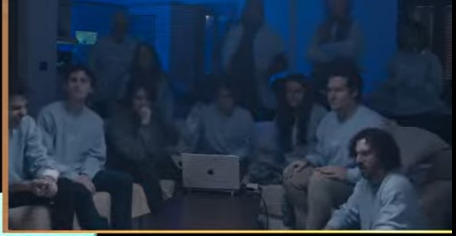
It's a bit glitchy, sorry about that
Awww thank youuuuu
I was actually working on a little Tiresias and Odysseus dancing piece inspired by the livestream!!

#slone asks#epic the musical#epic the musical fanart#artists on tumblr#jorge rivera herrans#the odyssey#etm#greek myth#ancient greek#tiresias#epic tiresias#odysseus#epic odysseus#epic the underworld saga#the underworld saga#odyssey#wip#my artwork#ibis paint#work in progress
3K notes
·
View notes
Text


Colors vs. final painting
I am the offering, and the fire which consumes it, and the one to whom it's offered
Prints here :)
Email for commission info at [email protected].
3K notes
·
View notes
Text

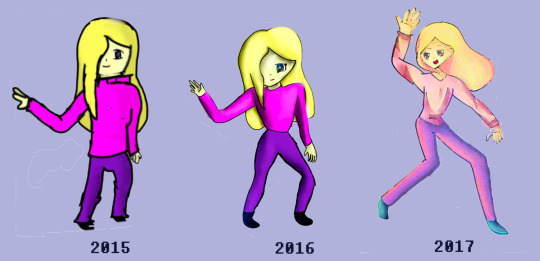


My yearly progress!!! past tumblr posts below ouo. I got kinda lazy this year so i dint do any fancy smancy background, but I am quite pleased with how my rendering has improved :D I think my colour choices have become more dynamic. I hope I figure out how to really properly draw hair in the next couple of years ; w ;
2018 2019 2020 2021 2022 2024
#improvement#these yearly progress things are never drawn in my usual year style T O T#ik i said last year that artstyles are a myth in developing artists but i feel like i still draw a certain way normally#i think 2016 and 2018 were kinda indicative of how i drew those years but everything else was more different from my usual styles#that being said- the way i draw still leaks into these yearly progresses even if im being quirky#like in 2017 i didnt colour my shading like that. but i did use that thick lineart for everything#so u can still get an inkling of how i drew that year
439 notes
·
View notes
Text

oh, happily ever after (wouldn’t you know?)
#puppy penned#apollo#hermes#greek mythology#baby hermes#greek myth art#hermes and apollo#still dont know tags.#anyways this is technically part of a time progression project but i needed it done for Other reasons#if i ever get the time progression project done it will have much more reduced colors n shading#for aesthetic purposes#but have this!#hermes art#apollo art#does. does general greek myth count as#tagamemnon
28 notes
·
View notes
Text
I’m excited to show my Love In Paradise teaser for my partial animatic (it will be on the last 1.5 mins of the song) that I’ve been working on this past month+. The full video will be uploaded this Saturday 01/11 @ 12pm on my youtube (@ Ayan0) See you then 🥰!
#epic the musical#epic the wisdom saga#love in paradise#animatic#wip#work in progress#tagamemnon#the odyssey#odysseus#calypso#athena#greek myth art#greek mythology#art#artist on tumblr#ayan0
23 notes
·
View notes
Text

A kind Princess at the edge of the world 🌊
#illustration#art#artwork#digital art#greek mythology#classical mythology#ancient greece#mythology#classical literature#greek myth art#odyssey#the odyssey#odysseus#nausicaa#WIP#art wip#work in progress
89 notes
·
View notes
Text
good god my obsession with infidelity is becoming a little bit concerning but hot women (so like all women) cheating on their mid-ass boyfriends/husbands with either their homoerotic girl best friend or "the other woman" in their relationship (who they used to scorn as cheap and a homewrecker as a scapegoat for the boyfriend's ungratefulness) ESPECIALLY in historical settings will always be a top tier trope for me and i will never not eat it up
#i do not condone cheating irl ftr#it is possibly my favourite trope ever after childhood best friends (to strangers/enemies) to lovers#what can i say i do not care about men. i love using them as pawns for adding angst to my toxic yuri and nothing else#faberry#cazzie#we are never ever getting back together#sophie gonzales#ashra#<- they're from my wip btw#kannagi x madhavi#kashi x mastani#tina x anjali#tinjali#brittana#gini#addybeth#kunti x madri#ignore these tags as they get progressively more unhinged please i swear im fine#but like all those hindu myths where the king had a zillion wives?? the POTENTIAL#vauseman#annaleve#avalouise#bhagiratha's moms (?)#we set the dark on fire#tehlor kay mejia
154 notes
·
View notes
Text

Coughs
Throws wip at you
Runs away
Don’t @ me I’m busy with school
#greek myth#greek myth art#Persephone#greek gods#ancient greek#greek mythology#anti lo persephone#anti lo#lo critic#wip#art wip#my wip art#work in progress#digital art#my art#queen persephone
27 notes
·
View notes
Text
update on lions & men songs
(Title of Song (characters who sing the song); length of lyrics currently written)
Fully Finished:
The Sparta Penthouse (Menelaus, Helen, Agamemnon); 3:20
No Oaths (Achilles, Hector); 3:45
Partially Finished:
Kiss & Tell (Paris, Helen); 2:54
Terrible (Hector, Paris, Helen); 1:25
Someone Worth Fighting For (Achilles, Patroklos, Menelaus, Helen); 1:15
Greatness (Thetis, Achilles, Patroklos); 1:22
Knock-Knock (Troilus, Cressida); 0:44
Home (Ensemble, Achilles); 2:20
the Council of Gods (all gods); 0:20
Just Drive (Automedon, L Ajax, Teucer, Hermes); 0:11
The Trojan Horse (too many); 3:38
I Run This City (Helen); 0:36
Someday/Ashes To Ashes (Achilles, Patroklos); 2:12
Rage (Cassandra, Muse); 2:28
I’m Begging You (Nestor, Odysseus, Patroklos, Achilles); 1:33
Retrieving The Palladium (Odysseus, Diomedes, Helen); 0:18
Someday Reprise (Achilles, Patroklos, Deidamia); 0:47
Dirge (All); 1:51
some parts will probably be cut, and this isn’t all of the songs, but it’s just a feel of some progress
#lions & men: the musical#greek myth retellings#songwriter#progress update#work in progress#achilles#helen of troy#paris of troy#hector of troy#odysseus#diomedes#patrochilles#patroclus#menelaus#agamemnon#helen of sparta#ajax the greater
32 notes
·
View notes
Text
Ares and Hephaestus Dinnertime
After a day of tinkering for Hephaestus, he realizes the sun is setting when his automatons start buzzing, flying around to close curtains and turn on lights. It's then he realizes he hasn't eaten since morning.
His Repair shop never gets too busy in these country crossroads, but he gets lost in his ideas and projects. And after sitting for so long, his legs ache. One golden automaton chirps and brings his cane. It's still a good day for his limbs. After stretching and encouraging blood flow to return, Hephaestus can tolerate using just the cane for balance.
The moment he opens his workshop door, he's blasted with aromas of earthy flavors. His stomach delights in reminding him that it is empty. Being deities meant they did not need food in the same way, but their mortal forms craved it just the same.
Still Hephaestus frowned.
It meant Ares was in the kitchen.
Hephastus lumbered through the hall to the kitchen, wrinkling his nose as he entered. Ares hadn't burnt anything in centuries, but he had a heavy hand with spices. Hephastus resigned himself to a large meal. Ares hadn't done more than reheat leftovers or takeout in months. They were either finally finished with those, or Ares was in a mood.
A shrill whistle announced an incoming call to Ares's phone. Seemlessly he answered it and just said, "No," before hanging up. The whistle started again. Ares scowled and hung up without answering.
Definitely in a mood.
Hephaestus took the opportunity to dip a spoon into the tomato sauce for a taste. It wasn't bad, just not what he was in the mood for. "Too much garlic." He turned away to see what alternatives hid in the refridgerator.
Ares grumbled over the pot. The only clear words were "No such thing." Ares did open the oven to reveal roasted squash. This caught Hephaestus's attention. "This is for tonight. The sauce is not for you. Now, steak or pork?"
Hephaestus had to laugh. "You made both, didn't you."
"Couldn't decide. Didn't see you down here making dinner either." Ares eyed the multi-armed flying automatons. "Set the table. It's almost done." Millennia had a way of changing the world. Ares fell in line and changed right along with it. Unlike most of their family.
#my writing#writers on tumblr#ares and Hephaestus modern story#ares#hephaestus#ares deity#hephaestus deity#greek myth inspired#greek gods#greek mythology#indie writer#original story#scene#modern ares#modern hephaestus#story planning#story ideas#work in progress#ares god of war#ares is the main character for a change#maybe not this scene#but i'm trying out ideas#before you question cook!Ares have you seen back of house staff?#Those are his kind of guys
23 notes
·
View notes
Text
"Capitalists are no more capable of self-sacrifice than a man is capable of lifting himself up by his own bootstraps."
Vladimir Lenin
#capitalist myths#vladimir lenin#lenin quotes#socialist quotes#socialist thoughts#socialist theory#socialism#communism#marxism leninism#socialist politics#socialist news#socialist worker#worker solidarity#workersolidarity#socialist#communist#marxism#marxist leninist#progressive politics#politics#anticapitalism#anti capitalist#anti capitalism#anticapitalist#fuck capitalism#fuck neoliberalism
236 notes
·
View notes
Text
Just 4 seconds, but.....😭
#art#my art#digital art#fan art#digital drawing#artwork#digital#greek mythology#greek myths#the iliad#aristos: the musical#aristos the musical#aristos achaion#patrochilles#work in progress#wip
116 notes
·
View notes
Text




For some reason... I had the most easiest time drawing Athena.
119 notes
·
View notes
Text
I am working on the next fic idea (Pro Fighter X reader) ☺️ it’s 4.8k right now and counting LOL. But I was sick for the last week and really only got some writing done on Friday.
I might shuck a couple other fics out between getting this big one going as it’s going to be multi chapter and a long one. Buuuuut just know it’s started!
Beginning is hard for me as setting up the plot and fic always is a struggle 🤣.
That being said I do have a question, for Sun Wukong I don’t want to be disrespectful to the name and culture as with some names you can’t shorten them for nicknames etc. (and I’ve really only delved into this story due to black myth so I’m very new)
For Sun Wukong is it just “Sun Wukong” or can you say something like just “Wukong” or is there another? I just wanna make sure I get it right.
29 notes
·
View notes
Text
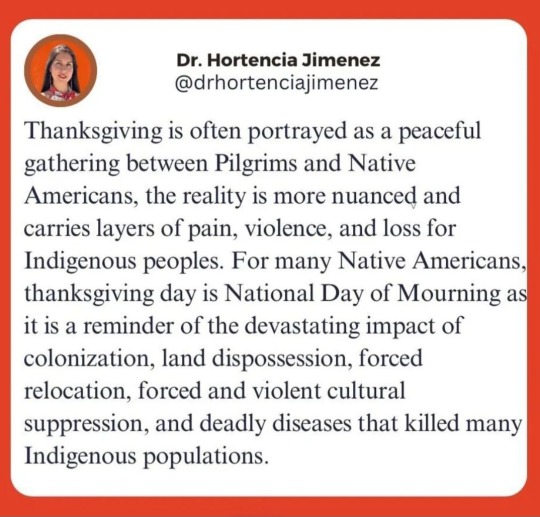
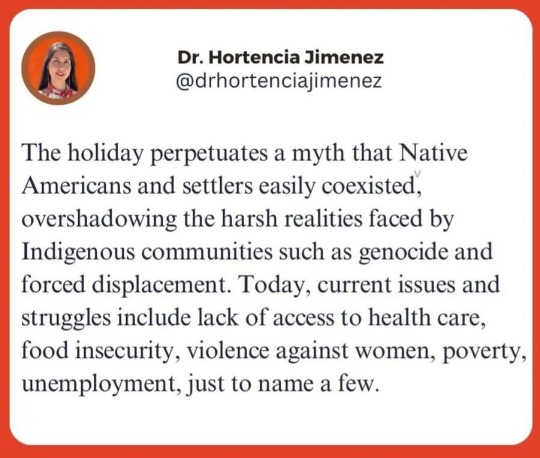
Happy Thanksgiving to all who celebrate! May this be a time of gratitude, joy, and love for you and yours.
I would also suggest making this a time to acknowledge the National Day of Mourning by honoring, remembering, and learning about the death and suffering of indigenous Americans due to settler colonialism and its present-day effects.
Again, I hope everyone has much to be thankful for in these holiday times. I also hope these times can serve as an opportunity to take a clear-eyed look at American history and challenge the myths that serve as the foundation for many Amercians' understanding of our past and present.
#thanksgiving#happy thanksgiving#history#genocide#ethnic cleansing#american indians#native americans#politics#us politics#progressive#imperialism#narional day of mourning#colonialism#settler colonialism#indigenous history#thanksgiving myths#first nations
98 notes
·
View notes